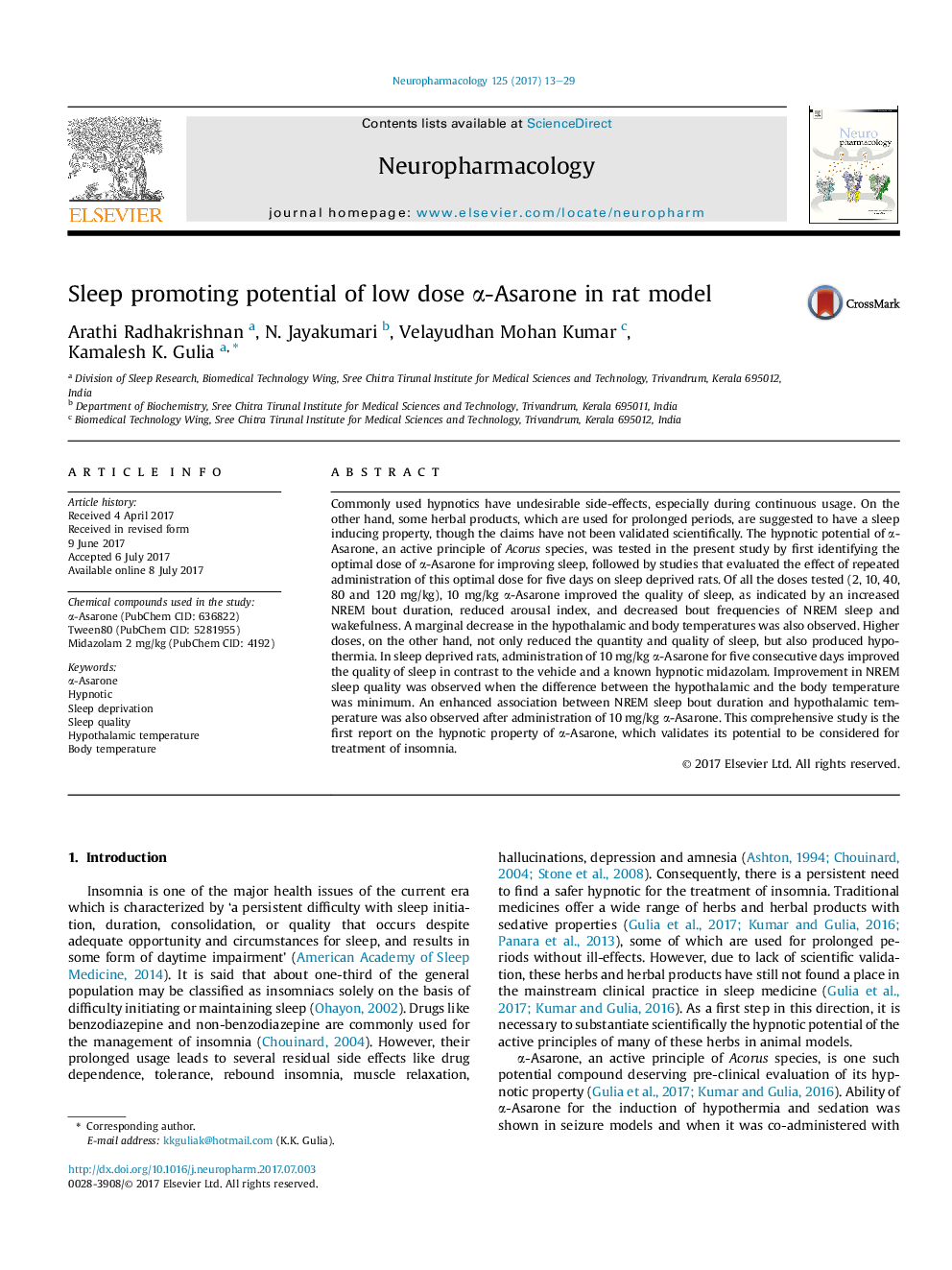| Article ID | Journal | Published Year | Pages | File Type |
|---|---|---|---|---|
| 5548800 | Neuropharmacology | 2017 | 17 Pages |
â¢First report on validation of the hypnotic potential of α-Asarone in animal model.â¢Î±-Asarone 10 mg/kg/i.p. enhanced sleep quality in normal and sleep deprived rats.â¢Minimum variation between Thy and Tbody favored longer bouts of NREM sleep.â¢Better sleep quality attained after α-Asarone treatment than the midazolam.â¢Severe hypothermia reduced the quantity and quality of sleep at higher doses.
Commonly used hypnotics have undesirable side-effects, especially during continuous usage. On the other hand, some herbal products, which are used for prolonged periods, are suggested to have a sleep inducing property, though the claims have not been validated scientifically. The hypnotic potential of α-Asarone, an active principle of Acorus species, was tested in the present study by first identifying the optimal dose of α-Asarone for improving sleep, followed by studies that evaluated the effect of repeated administration of this optimal dose for five days on sleep deprived rats. Of all the doses tested (2, 10, 40, 80 and 120 mg/kg), 10 mg/kg α-Asarone improved the quality of sleep, as indicated by an increased NREM bout duration, reduced arousal index, and decreased bout frequencies of NREM sleep and wakefulness. A marginal decrease in the hypothalamic and body temperatures was also observed. Higher doses, on the other hand, not only reduced the quantity and quality of sleep, but also produced hypothermia. In sleep deprived rats, administration of 10 mg/kg α-Asarone for five consecutive days improved the quality of sleep in contrast to the vehicle and a known hypnotic midazolam. Improvement in NREM sleep quality was observed when the difference between the hypothalamic and the body temperature was minimum. An enhanced association between NREM sleep bout duration and hypothalamic temperature was also observed after administration of 10 mg/kg α-Asarone. This comprehensive study is the first report on the hypnotic property of α-Asarone, which validates its potential to be considered for treatment of insomnia.
